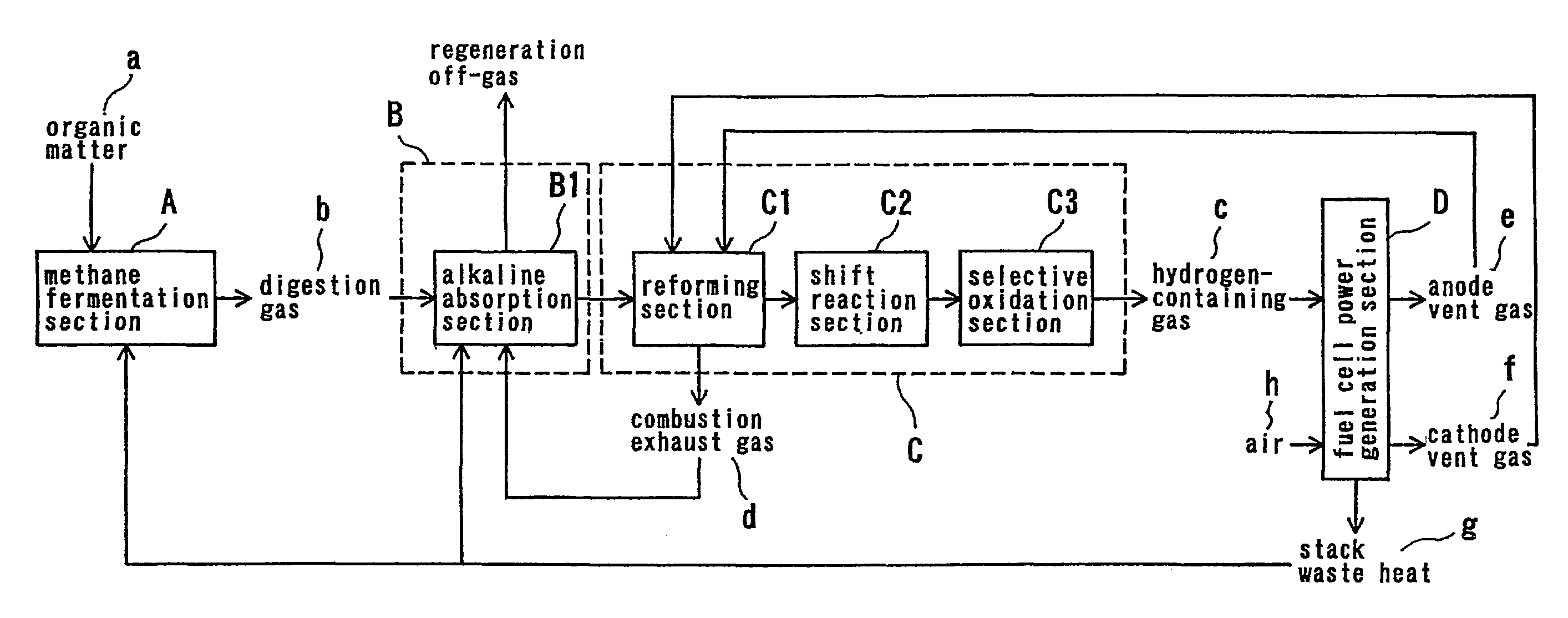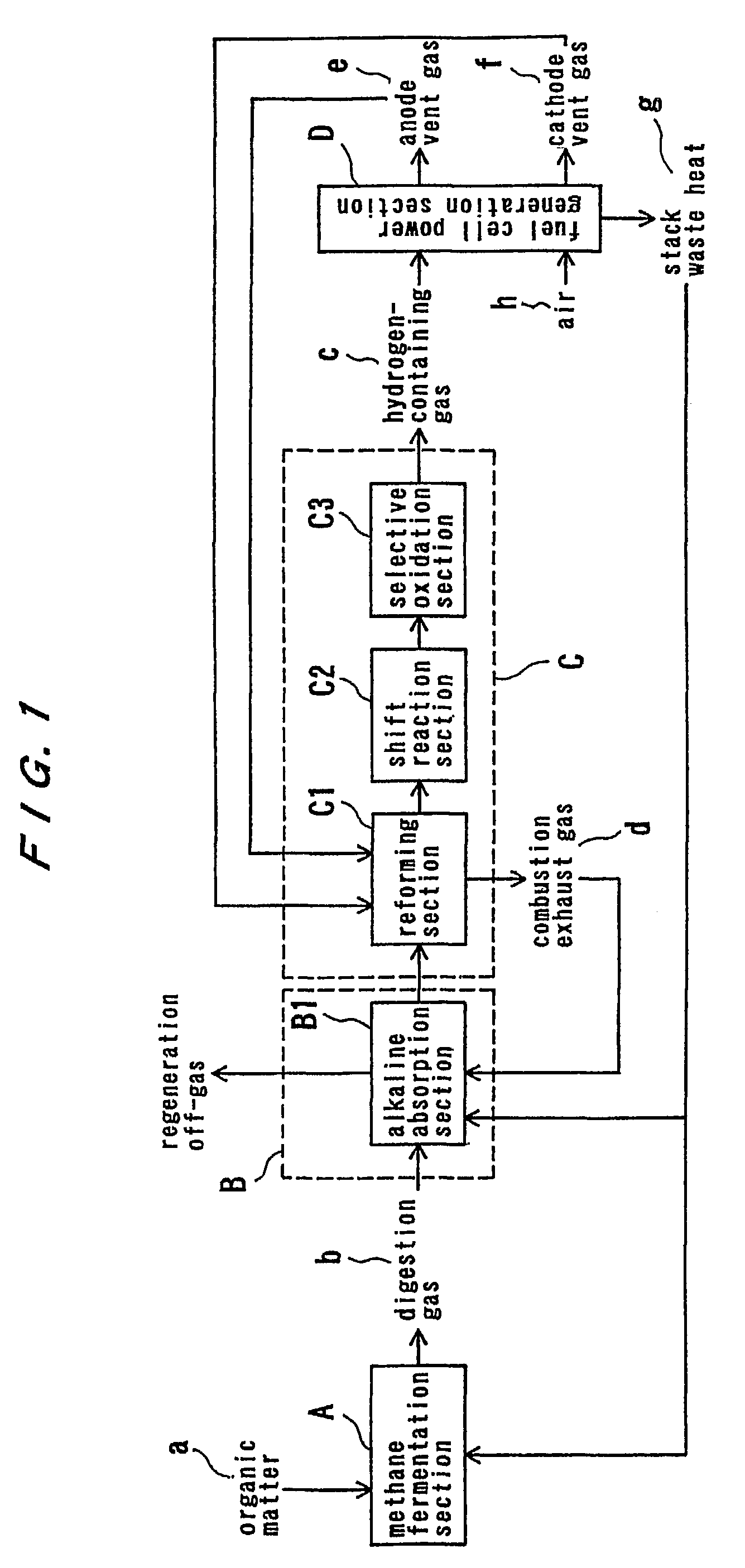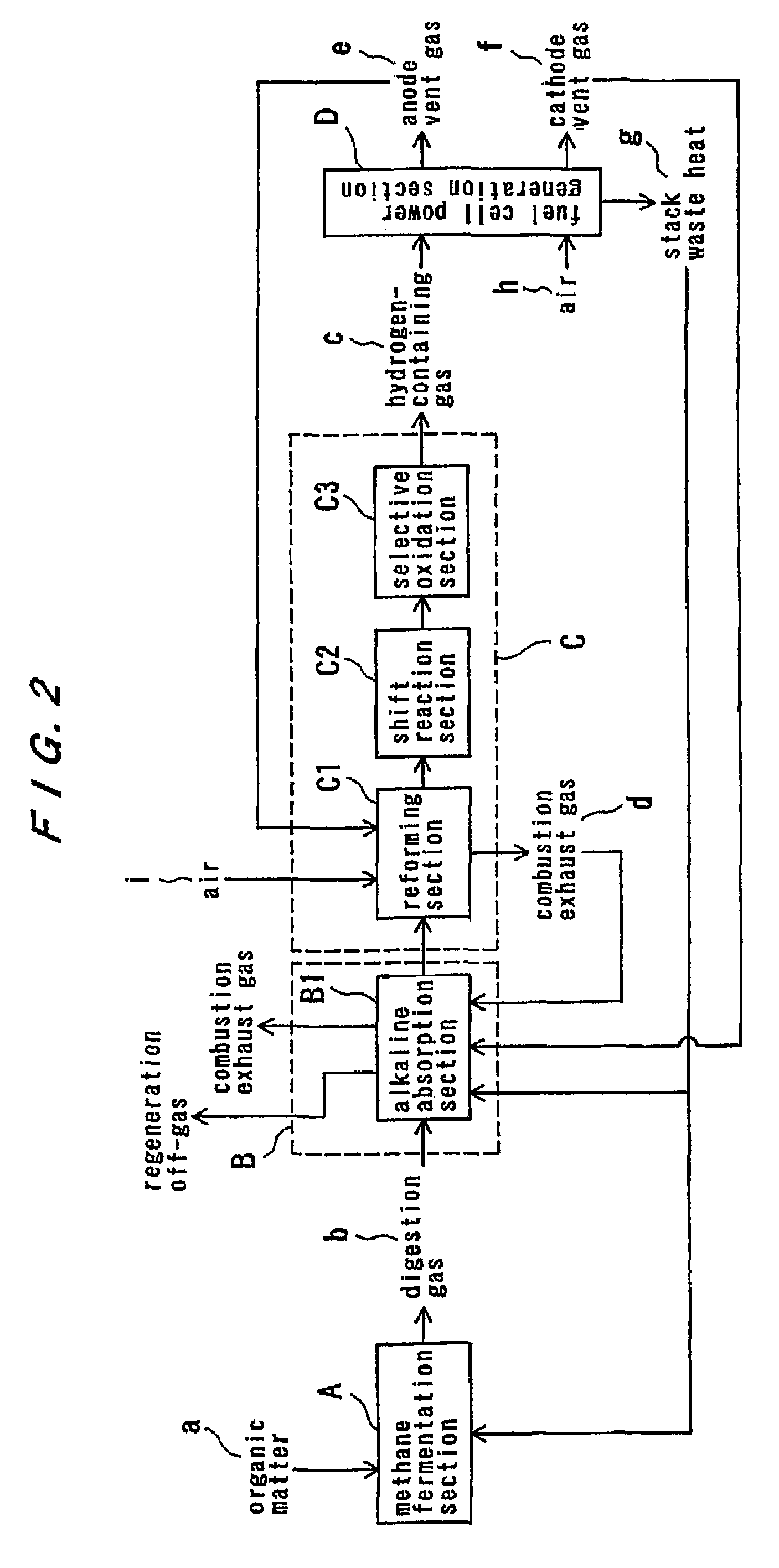Fuel cell power generation method and system
a technology of fuel cell and power generation method, which is applied in the direction of biological sludge treatment, liquid degasification, separation process, etc., can solve the problems of limiting the level of methane enrichment, large size of the absorption apparatus, and small dioxide absorption capacity of the treatment water, etc., to achieve low running cost, high running cost, and simplified process
- Summary
- Abstract
- Description
- Claims
- Application Information
AI Technical Summary
Benefits of technology
Problems solved by technology
Method used
Image
Examples
first embodiment
[0040]A fuel cell power generation system according to the present invention will be described in detail with reference to the accompanying drawings.
[0041]FIG. 1 is a schematic block diagram showing the fuel cell power generation system according to the first embodiment.
[0042]As shown in FIG. 1, in this embodiment, organic matter a is fermented in a methane fermentation step A. An anaerobic digestion gas b produced in the methane fermentation step A is pretreated in a pretreatment step B, and the pretreated gas is processed in a hydrogen production step C to produce a hydrogen-containing gas c which is then supplied to a fuel cell power generation step D to generate electricity.
[0043]The hydrogen production step C comprises a reforming step C1 for catalytically reforming methane, contained in the gas pretreated in the pretreatment step B, with steam into hydrogen and carbon monoxide; a shift reaction step C2 for catalytically converting carbon monoxide, contained in the gas after th...
second embodiment
[0076]Next, the fuel cell power generation system according to the present invention will be described in detail with reference to the accompanying drawings.
[0077]FIG. 2 is a schematic block diagram showing the fuel cell power generation system according to this embodiment. In FIG. 2, steps and elements identical to or corresponding to those in FIG. 1 have the same reference characters as used in FIG. 1. In the second embodiment, portions not specifically referred to herein are the same as those in the first embodiment.
[0078]According to this embodiment, as shown in FIG. 2, the combustion exhaust gas d discharged from the reforming step C1 in the hydrogen production step C is utilized as a heat source for regeneration in the alkaline absorption step B1, while the cathode vent gas f discharged from the fuel cell power generation step D is utilized as a regeneration gas in the alkaline absorption step B1. Further, a part of the stack waste heat g from the fuel cell power generation st...
third embodiment
[0085]Next, the fuel cell power generation system according to the present invention will be described in detail with reference to the accompanying drawings.
[0086]FIG. 3 is a schematic block diagram showing the fuel cell power generation system according to this embodiment. In FIG. 3, steps and elements identical to or corresponding to those in FIG. 1 have the same reference characters as used in FIG. 1. In the third embodiment, portions not specifically referred to herein are the same as those in the first embodiment.
[0087]According to this embodiment, as shown in FIG. 3, the combustion exhaust gas d discharged from the reforming step C1 within the hydrogen production step C is utilized as a regeneration gas in the alkaline absorption step B1. In this system, of course, the combustion exhaust gas d discharged from the reforming step C1 may be utilized as a heat source for the regeneration in the alkaline absorption step B1, while the cathode vent gas f discharged from the fuel cell...
PUM
| Property | Measurement | Unit |
|---|---|---|
| Temperature | aaaaa | aaaaa |
| Temperature | aaaaa | aaaaa |
| Temperature | aaaaa | aaaaa |
Abstract
Description
Claims
Application Information
 Login to View More
Login to View More - R&D
- Intellectual Property
- Life Sciences
- Materials
- Tech Scout
- Unparalleled Data Quality
- Higher Quality Content
- 60% Fewer Hallucinations
Browse by: Latest US Patents, China's latest patents, Technical Efficacy Thesaurus, Application Domain, Technology Topic, Popular Technical Reports.
© 2025 PatSnap. All rights reserved.Legal|Privacy policy|Modern Slavery Act Transparency Statement|Sitemap|About US| Contact US: help@patsnap.com



